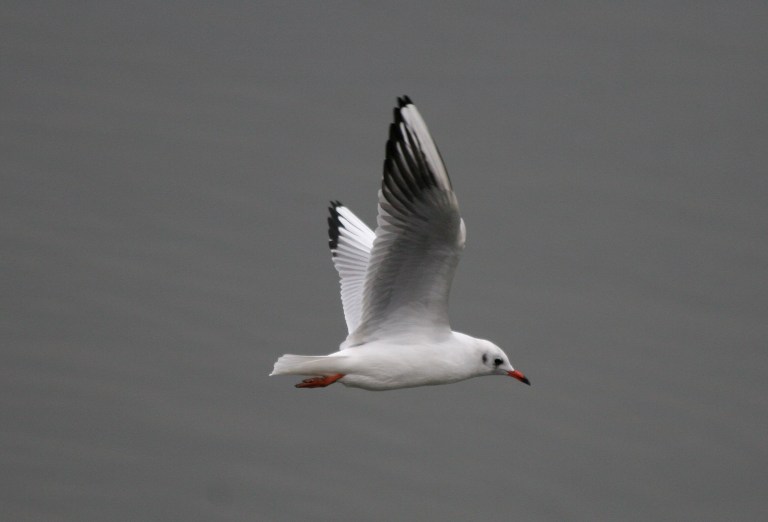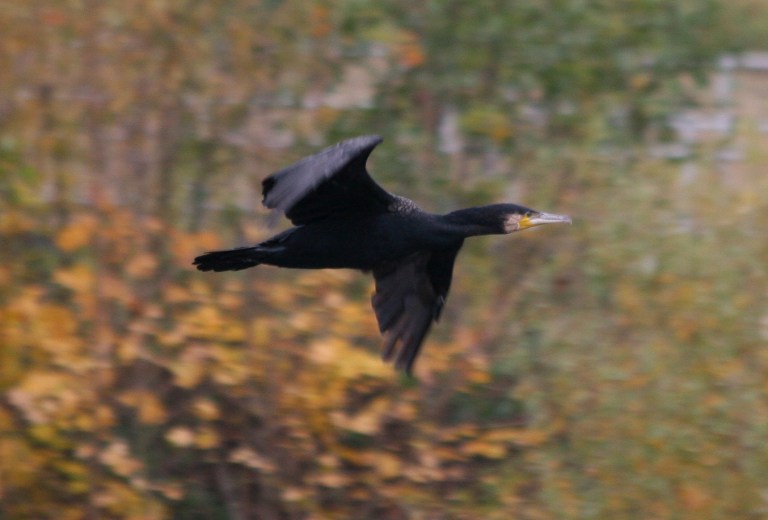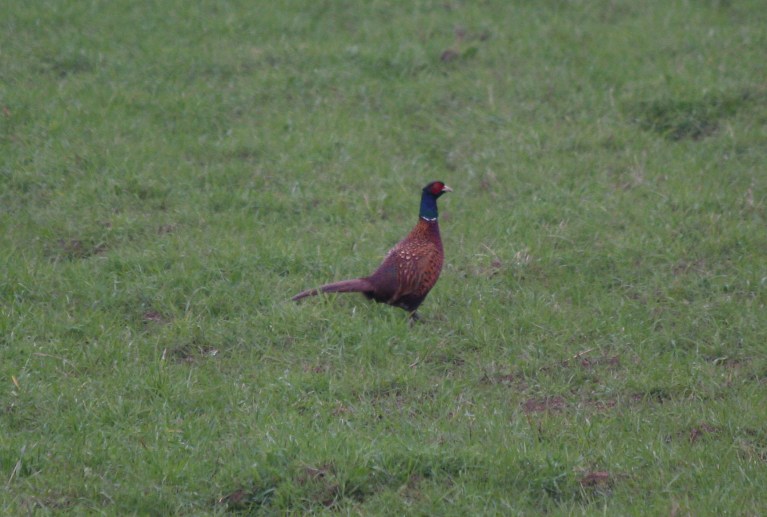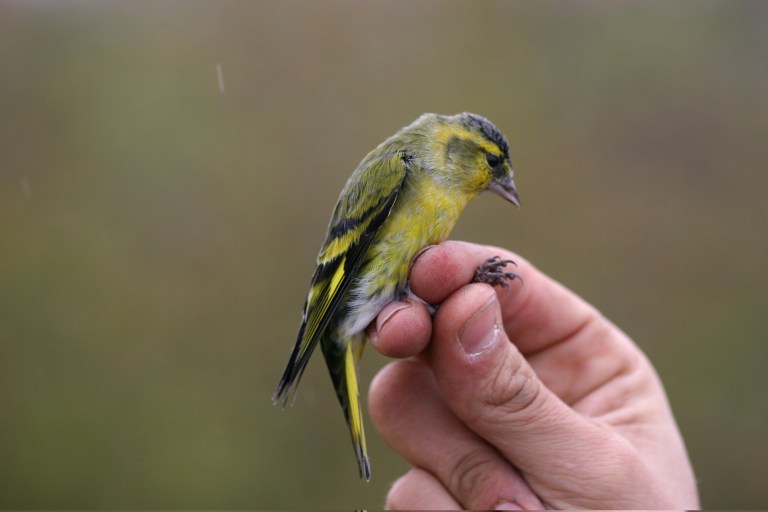Photos may come and go, but I know we can rely on John Avise for a weekly selection of bird photos. Today we have some birds from Germany; John’s IDs and notes are indented, and you can enlarge the photos by clicking on them.
Birds in Germany
In 2007, I was invited to offer a several-day mini-course on evolutionary genetics for the general public, at a special retreat in southern Germany. In between lectures, I found a bit of time to take the following avian photographs near the meeting site. And, as luck would have it, one morning there happened to be a team of bird banders (or bird ringers, as they are called in Europe) near the site, manning their mist-nets and capturing small birds for banding. So, several of these photos are of “birds-in-the-hand” caught by the ringers that morning.
Black-headed Gull (Chroicocephalus ridibundus), adult in basic or non-breeding plumage:
Common Gull (Chroicocephalus ridibundus), adult:
Common Gull juvenile:
Great Cormorant (Phalacrocorax carbo), adult:
Ring-necked Pheasant (Phasianus colchicus), male:
Bearded Tit, now known more often as the Bearded Reedling (Panurus biarmicus), male:
Bearded Tit female:
Common Reed Bunting (Emberiza schoeniclus) in basic or non-breeding plumage:
Dunnock (Prunella modularis):
Eurasian Siskin (Spinus spinus), male:
Eurasian Siskin female:
Yellow-browed Warbler (Phylloscopus inornatus):













Great photos! I just love those Bearded Tits. Gorgeous markings on male and female.
Thanks!
Even when in Germany (where I live), John shows me some birds I rarely see, or at least not near enough to identify. Does any of the bird specialists know why palaearctic birds are on the whole less vibrantly colored and less spectacular than e.g. South American birds?
Great pictures of the birds in the hand that we rarely get to see closely enough or for long enough for accurate ID.
I’m not a bird specialist but I do know some of the general arguments about bird coloration.
The first question is, is it true that tropical birds are more brightly colored than temperate or northern birds? There are more species in the tropics in total, so there are more brightly colored species as well, but there are also plenty of LBBs in the tropics and birds like cardinals, bluejays, and painted buntings in temperate zones. A 2022 paper by Cooney, et al. in Nature Ecology and Evolution suggests that there are relatively more colorful songbirds in the tropics (they had a computer measure reflectance from photographs in both the visible and UV spectrum which birds can see), with colorful species increasing by 20-30% as you move from the northern hemisphere to the tropics, especially true in dense tropical rain forest.
So, why? There are numerous possible explanations and they are not mutually exclusive.
1) It takes energy to produce colorful plumage and there is more energy available in tropical environments year round.
2) There are more colorful foods (berries and such) where birds can acquire carotenoids (think red, orange, yellow) in tropical environments. Most birds cannot synthesize carotenoids de novo, though they may modify them. The exception is parrots who can make their own psittacofulvin pigments (red-yellow).
3) In a dense environment, especially one with many species of birds, you need to be more visible to communicate with conspecifics (find potential mates or defend territory).
4) Tropical environments are more colorful and dense and you can ‘blend in’ even while being colorful, thus the potential predation costs to being colorful may be lower.
5) Colorful plumage can demonstrate your health in the face of parasitism/disease and parasites/diseases are more common in tropical environments. (Hamilton & Zuk, 1982)
I only partially buy #1 & 2. There is greater energy and fruit year round in tropical environments, so maintaining colorful plumage year round may be more feasible. Breeding seasons may also be less strictly defined in the tropics and multi-clutching more viable. But, many birds migrate for breeding probably because of the explosion of food energy in northern climes during the spring-summer (including carotenoid rich fruit & berries) and birds also molt in and out of breeding plumage at the same time so it seems like colorful plumage ought to be feasible during breeding season for these birds.
I’m also only partially buy #3. Animals have many ways of identifying and communicating with conspecifics – sounds, behavior, smells, location. Year round territory defense and mate ID is probably more important in the tropics but drab tropical birds seem to find mates.
I do buy #4 in an overall sense. Being able to avoid predation if you are colorful is easier in an environment that is also colorful and dense. Many ground and low shrub dwelling species seem to be more brown and grey (like dirt, rocks & twigs) while canopy birds seem to be more colorful.
I also buy #5. In most species, females (large, expensive gametes) are the limiting resource for males. The females are drabber (more camouflaged), quieter, and choosier. Males compete for females via extravagant plumage, displays, songs, etc. Bright colors are expensive energetically and via higher predation costs and thus demonstrate a male’s fitness (ability to deal with parasites/diseases as well as to evade predators). All this is standard sexual selection. This may be more important in environments with higher levels of parasites and diseases.
Obviously there are plenty of exceptions to challenge all of these ideas making it an area ripe for much further research .
Thanks for this great organization of thought in response to the question posed. These hypotheses may be standard and overlapping, but nonetheless are all intriguing.
Thank you very much, Patricia!
I envy you being able to see expert bird banders in action. And to get the opportunity to see these flittery little birds up close, without need for binoculars. And I too love the bearded tits.
Beautiful colors on the Breaded Tit! My favorite from these photos.
Those birds-in-the-hand must have been terrified, yet their faces don’t show it. Their little hearts must have been pounding!
Vielen Dank für die schönen deutschen Vögel!
Love those little European songbirds – buntings, reedlings, siskin are all exquisite. Thanks as always for a birdy world tour.
Beautiful birds! In the 2nd photo, the binomial of the Common Gull should be Larus canus.
Very nice collection of photos. Especially the small birds are rarely seen here in my part of Germany. So far I only managed to photograph the Dunnock. Those two Eurasian siskin pictures are wonderful even though the male looks slightly terrified.